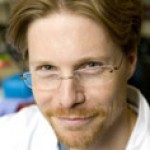J Arch Science 2009; 36:2408-2414
We have amplified Mycobacterium leprae DNA from the skeleton of an adult human female exhibiting signs of lepromatous leprosy (LL). The remains were excavated from the site of Devkesken 6 on the Ustyurt plateau of Uzbekistan and date to between the 1st and 4th centuries AD. Recovered DNA was fragmented but of sufficient quality and quantity to allow a series of biomolecular genotyping methods to be applied. These methods included variable nucleotide tandem repeat (VNTR) typing of two micro- satellite and one minisatellite regions and also single-nucleotide polymorphism (SNP) typing for nine informative loci.
Genotyping showed that the causative strain of M. leprae exhibited a SNP-type 3 profile, characteristic of cases associated geographically with Europe and North Africa. Further SNP sub-typing was performed and the data obtained from the Uzbek leper was compared with the same loci amplified from a case of LL recovered from Blackfriars, Ipswich, UK dating to between the 13th and 16th centuries AD. Unique group 3 subtypes were found in both the Uzbek case and Ipswich 1914. These appear to be ancestral to recent type 3 strains. Mycolic acid analysis confirmed the presence of M. leprae in the Uzbek samples. Phylo- genetically informative SNPs and other polymorphic loci will contribute to the study of human migra- tions, as well as the origin and spread of leprosy.

